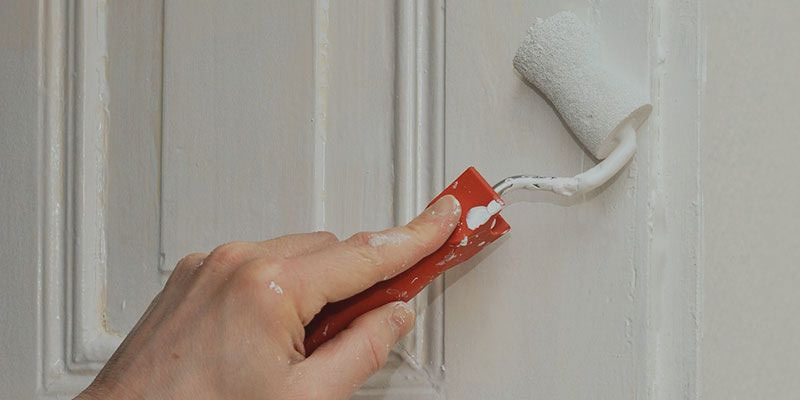
Over time the interior doors of your home will start looking a bit grubby and worse for wear. This is especially true if you have little ones running around all day.
If you have the required money and need a change in your home, you could invest in getting new designer doors from a company. But if your budget won’t budge from its limitations, it is better to repaint the doors you have already.
Here’s an expert guide for painting an internal door:
Prepare the door: The first thing to uninstall the doors by the hinges and keep it resting on the floor. Or you can place the door on the table or on portable workbenches that are supported at the end. Removing the door may not sound exactly useful, but when painting, it eliminates the problem of running paint and also helps in a faster paint job. You should also remove the handles and locks, so there is a bare door in there to paint. Now, with no elements on the door, it is easier to paint well, with no hinges or furniture to worry about.
Wipe the door well with a dry cloth to remove dust. If your door is dirty, you might even have to use some sandpaper to maintain a smooth finish throughout. The point of this task is to eliminate any protrusions or mounds on the door while painting it. Pay attention to all areas where paint has got collected and is darker than on other places.
Do not miss little runs especially when repainting since now you can spot them easily. Use a steel scraper if the sandpaper does not do the job for you, especially between panels so that there is a consistent finish to the door. Sandpaper and light-sanding are good enough to work a door. Fix the cracks on your door, before painting the internal door.
Does your door need a primer? If the door has wooden stains, it could have been painted with oil-based paint before. If you need to repaint a dark-colored door with lighter colors, you need some coats of a primer according to the primer box instructions. Once you have sanded and applied coats of primer to the door, paint the door’s panels first, especially all the bits in the middle of the door!
Paint the panels: Paint the doors panels – i.e. the bits in the middle with a paint roller, in the same direction as the direction of wood grain, or up and down if they are aligned straight. Immediately later, get a brush and paint all the bits, in the direction of the wood grain in a clockwise direction. When painting doors, never paint against the direction of wood grain or else you would not get a good finish.
Now paint the rest of the door: Paint the rest of the door with a high-density paint roller, with the grain of the wood in the middle in a vertical fashion, and then horizontally from left to right. Use your roller across all sections and then paint the door’s border. The borders need to be painted from top to bottom on both and left and right parts of the door, followed by a coat of paint in a horizontal direction. Use the brush to paint all recesses with the grain and not against it.
Apply a second coat: Allow the paint to dry then sand the door down very lightly on the surface. Use fine sandpaper for this purpose. Get rid of the bubbles of paint that might have accumulated on the door. Run your hand across the entire door surface before you start the process to know if there are some bumps and mounds on the door. There could be some raised areas here and there.
Use the fine sandpaper and sand the door on the surface to ensure a smooth surface. Clean the dust on the door after you are done and vacuum the edges and recesses too. The second coat needs to be applied just like you did with the first coat.
Painting a door or repainting needs a process. One should adhere to the process so that the door is painted with the grains, with a fine finish and smooth surface. Two coats of paint are required for the entire door to look as good as new, without the bumps and mounds that accumulate on the door. Ensure the handles and bolts are fitted in tightly after the process is over.
Do not paint the door when it is hanging on its hinges or else the paint could spread out on the steel elements and ruin the look completely. Remove all door furniture before you start painting the door. Also, make sure that the painting is done and sanded for a smooth finish or else the coat could thicken at inappropriate places, ruining the natural texture of the door.
